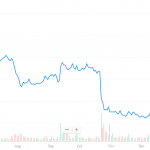We need to put to bed once and for all the notion the Fed is ahead of things and set rates to lead the market. It simply follows the market’s lead…
“Davidson” submits:
This history will serve as a good example of how the Fed operates vs. what the Fed says it does. The Fed lets all believe that it has a handle on economic activity, but history disagrees. The Fed’s predictions are so fuzzy because it cannot predict rates, economic activity or even when it expects to raise or lower Fed Funds rates. The market sets rates based on investor sense of pessimism/optimism. If investors turn more positive, rates rise as fixed income is sold to invest in equities. And vice versa.
T-Bills are the ‘canary in the coal mine’. When investors shift safe haven capital to equities, T-Bill rates rise and the Fed follows with a lag whenever T-Bill rates exceed the Effective Funds rate. Same when rates are falling. It is when T-Bills rise to the point that the T-Bill/10yr Treasury rate spread falls to 0.20% or less that lending shuts down enough to throw the current economic momentum into a major correction.
Rising or falling rates do not indicate improving or worsening liquidity. It is T-Bill/10yr Treasury rate spread which determines liquidity not the level of rates.
T-Bills rise to 1.23% vs. Effective Funds 1.16%-Fed likely to raise by 0.25% shortly.















Leave A Comment